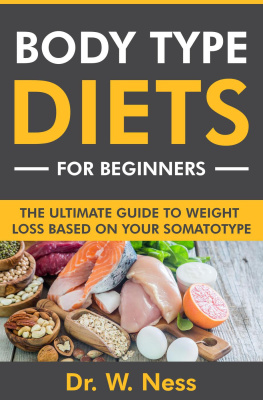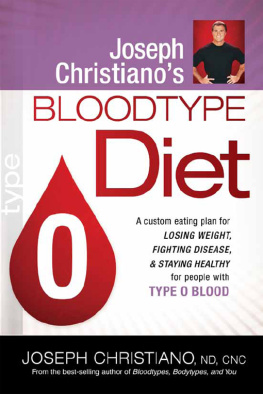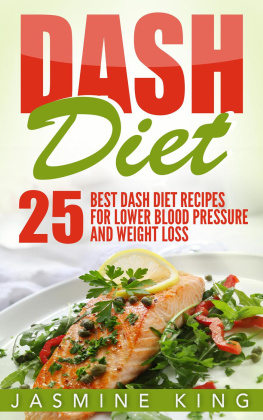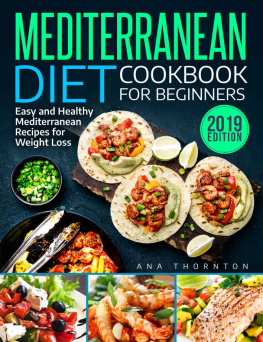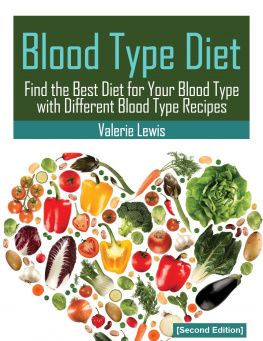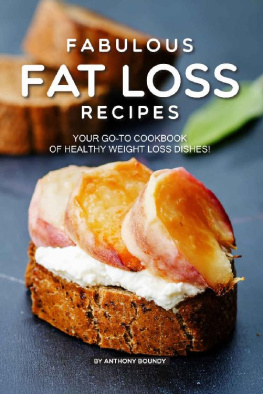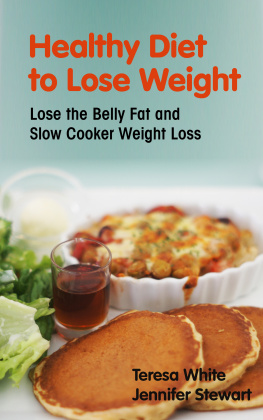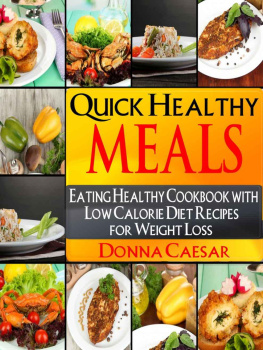Table of Contents
Healthy Diet Recipes
Blood Type Recipes and Comfort Foods
Susan Ramirez and Kathleen Wilson
Copyright 2013 Susan Ramirez and Kathleen Wilson
All rights reserved.
Introduction
Do you struggle with unsatisfying diets that ban all your favorite comfort foods, but still don't help you lose weight? If so, the problem isn't you; it's with the diet! You might find yourself feeling confused and upset when you use an eating plan that has helped your friends or your relatives take off the pounds and improve their overall fitness level. After all, if the diet helped someone else, why won't it work for you? The answer could be that your basic physical makeup and the diet simply aren't compatible.
Every individual has his or her own unique biological makeup. This is true even within families; it's how your cousin can stay slim effortlessly while you gain weight easily, and why your brother never had trouble losing weight once he decided to try. Unfortunately, most diet and nutrition books ignore this basic fact. They prescribe the same eating plan for everyone, regardless of metabolism, body type, health situation or other factors. That's why so many people find that dieting fails them time after time.
Naturopaths believe that one of the biggest causes of this kind of individual variation is blood type. Even though doctors insist on ignoring the traits associated with this basic difference between people, it can have a big effect on how you live your life. According to experts such as Doctor Peter D'Adamo, your blood type affects how your body metabolizes food. It also determines what kind of diet will work best for keeping you slim, healthy and energetic. If you use the wrong method for your type, the endeavor is automatically doomed to fail.
If you choose the right recipes for your blood type, however, you should be able to quickly and easily get your body where it needs to be. You can even enjoy a number of foods that many diets consider damaging or unhealthy. The key is to consume them in the correct amounts and in a way that's compatible with your type.
For instance, if you have blood type O, you do best on a diet with plenty of animal foods. You can enjoy beef, salmon, cod and just about any other fish, but wheat and grains are best kept in moderation. Type As do best with vegetable-rich diets that include a little seafood, while type Bs are best-suited for a moderate diet that falls between the two extremes. Diets for type AB are similar, but require more veggies and less dense animal foods to be a success.
This book contains two major parts. The first one covers all the information you need to figure out eating according to your blood type. It helps you understand the three types and their most important characteristics. It also gives you a detailed set of diet guidelines for each type, so you'll know which foods are most likely to help you lose weight and stay fit. By itself, that might leave you feeling adrift, though. That's why this volume also includes detailed recipes to provide snacks, treats, main dishes, sides and even breads to keep each blood type happy and healthy.
Depending on your type, you'll enjoy delicious ginger spice cookies, meatloaf and stir fries, buttermilk biscuits, green pasta and muffins, steaks and roasted sweet potatoes. No matter who you are or which diet your blood type tends to require, you'll find something satisfying and delicious to enjoy. After all, no diet can be successful if you don't like the food it allows.
That's the focus of the second part of this book. Too many diet books, including some that focus on blood type, are designed to remove just about everything you currently eat. It's true that this is an effective way to lose weight; just about everyone will drop the pounds if they're not allowed to eat the foods they life. It's not a sustainable option for anyone, however. If youre Type A diet limits you to salad greens and steamed veggies when you'd prefer to have fried asparagus, you aren't going to stick with it. The key is finding compatible foods that are appropriate for your type, but also comforting and familiar.
In part two of this cookbook, you'll get a wide selection of comforting recipes that have been designed to be healthy and sustainable. They include tasty peach oatmeal, a breakfast favorite for Type Os, as well as classic grilled cheese, perfect for type Bs and their high dairy tolerance. To determine whether a given recipe is right for you, simply pay attention to the ingredients and compare them to the allowed foods on your blood type list. Remember that you can substitute appropriate foods when necessary. While Texas-style French toast might not be right for a Type O as written, using rye bread or another wheat-free option can make it a delicious and health-improving choice.
If you've spent your life struggling with diets that don't work and leave you feeling sad and unsatisfied, don't blame yourself! There's a very good chance that the diet itself simply wasn't appropriate for your body and your blood type. If you're naturally suited to a type A diet, trying a low-carb option such as South Beach or the Atkins diet can actually make your situation worse. All that meat and dairy will encourage your body to put on the pounds. It'll also leave you craving the whole grains, fresh vegetables, and fruit that your blood type requires.
The same thing applies to type Os who try to get their bodies into shape through low fat vegan cooking, or type Bs who try to correct their processed, Western diets by choosing a paleo option high in coconuts and avocado. There's nothing wrong with any of these whole, natural foods on their own. When you match them up with the wrong type, however, it's a recipe for disaster! Instead of wasting your time on diets that simply won't do the job, try out some of these comforting and blood type-compatible recipes. They'll help you enjoy your food again, all while letting you lose weight and improve your health.
Section 1: Blood Type Diet
How the Blood Type Affects Diet
The blood type diet has gained in popularity over the past two decades since Dr. Peter D'Adamo first came out with his book 4 Blood Types, 4 Diets, Eat Right 4 Your Type. While the existence for the need for such a diet remains controversial, you will find strong advocates for it along with their blood type theories. However, at this point and time, there has been no actual scientific or medical research in depth to prove or disprove the theories that a person should stick with a particular diet based solely on their blood type. You can find plenty of support in the theory, just run an internet search about this and see all the websites that stand behind the theory that each blood type needs a certain type of diet.
Since we are discussing the blood type diet, it helps to know the different blood types. We will touch on different types for introduction purposes. First, the blood type is measured from the antigens, the proteins that exist on red blood cells. The blood types O, A, and B are the most common. When a person is blood type A only the type A antigens resides on the surface of the red blood cells. The same goes with type B. Type AB contains both. Blood type O contains neither. There is a third antigen called the Rh factor and it either exists or does not, thus you have the "positive" and "negative" ratings of blood types. Of all the blood types, "O positive" is the most common in the world, with A being a close second.
A naturopathic physician name Peter D' Adamo is the pioneer who first came up with the blood type diet theory, devising an entire diet system around a person's blood type. Many others follow along with the blood type diet theory that the need for a particular diet for each blood type has evolved through the years due to the changes in the environment and in people's methods of obtaining food. He proposes that if a person eats certain foods that go against their blood types they will become weak and the result can show up as diseases and even weight gain.



